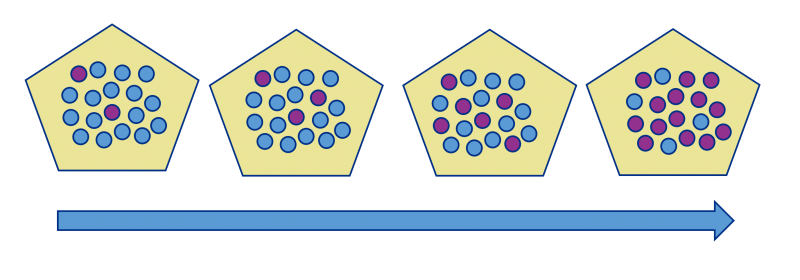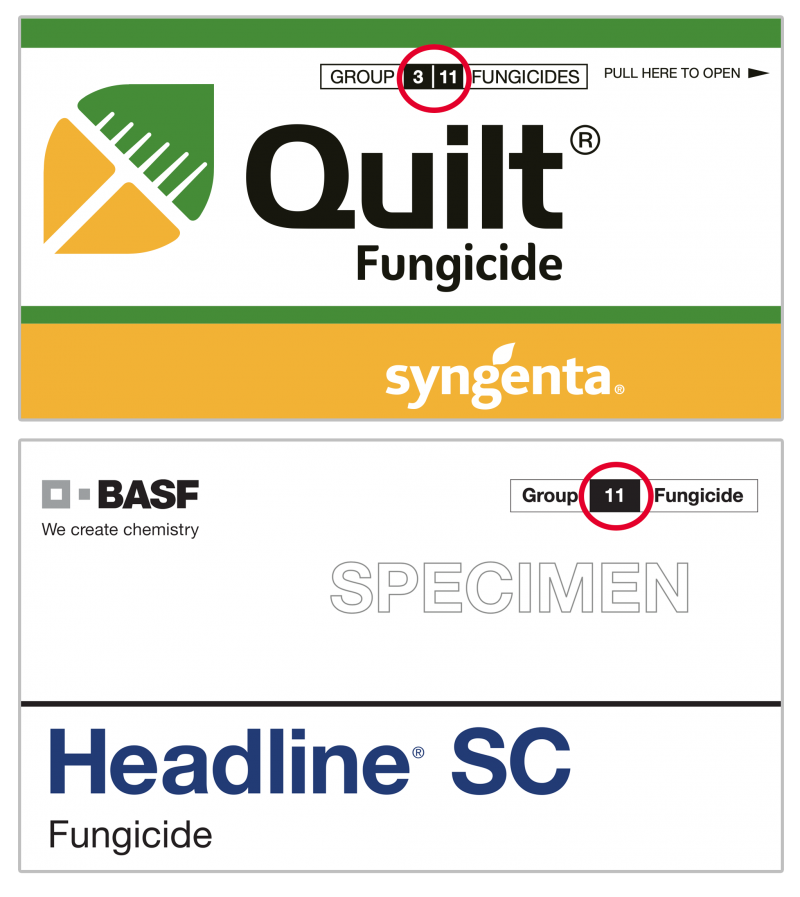Written with contributions by Emmanuel Byamukama, former SDSU Extension Plant Pathologist, and Febina Mathew.
A few corn and soybean fields have received or will be receiving a fungicide application this season, even though the disease pressure is extremely low to justify treatment. This is partly because of good grain prices and some plant health benefits from strobilurin (QoI, FRAC code 11) fungicides. Unfortunately, resistance to QoI fungicides has been detected in several fungal pathogens. QoI resistance was detected in the frogeye pathogen of soybean, Cercospora sojina, in South Dakota in 2019. Prophylactic fungicide sprays, when not needed, may lead to fungicide resistance developing, hence rendering these fungicides ineffective in the near future.
Understanding Fungicide Resistance

What is fungicide resistance?
Fungicide resistance can be defined as when a fungal population is no longer sensitive to or has reduced sensitivity to the fungicide and is unable to control the same pathogen.
How does fungicide resistance develop?
Figure 1 shows an example of how fungicide resistance develops. As seen in the first pentagon, spores produced by the pathogen are present in two different colors. The difference in spores arises naturally through random processes, such as mutation. The blue spores represent those that are sensitive to a fungicide and the purple spores are those that are resistant to the fungicide. When the fungicide is applied to the field, it applies a selection pressure and fewer blue spores are seen (as shown in the third pentagon). The purple spores remain and can re-infect the host to cause disease. Upon repeated application of the same fungicide, the purple spores are not affected by the fungicide applied, while the blue spores get killed by the fungicide. Eventually, the fungicide-resistant individuals dominate the population, and the fungicide will no longer be effective.
Do all pathogens have the same potential/likelihood to develop resistance?
Fungicide resistance may develop due to two main factors: the pathogen factors and the fungicide factors.
Pathogen Factors: Fungicide resistance may develop in pathogens which have one of these factors:
- Produce a large number of spores.
- Go through sexual recombination.
- Have a short generation time.
These factors allow for a greater chance of mutation within the pathogen population, which could result into reduced sensitivity of the pathogen to a fungicide.
Fungicide Factors: Examples of factors associated with fungicide which may increase the chances of the pathogen developing resistance include:
- The site of action.
- Frequency of application.
- Time of application.
- Dose applied.

Fungicides which have one mode of action tend to have a higher risk for resistance to develop. Fungicides with multiple modes of action tend to have a very low risk for fungicide resistance, because when one site of action is avoided, the other sites will still be effective. Frequency of application can also increase the probability for resistance to develop, because with each application, only certain members of the population are removed from the equilibrium. Similarly, applying a low dose or applying too late will also increase selection pressure.
The Fungicide Resistance Action Committee (FRAC), a group of scientists representing different chemical companies, was formed to provide fungicide resistance management guidelines for the sustainable use of fungicides. This group provides the likely risk of a given fungicide to become less effective based on the mode of action of the fungicide. Mode of action group, or FRAC code, is always indicated on the first page of the fungicide label (Figure 2). Mode of action refers to the biochemical process through which the fungicide interferes with the normal functioning of a fungal cell. Fungicides that only affect a single site (single mode of action) tend to have a higher risk of resistance to develop, while those with multiple sites tend to have a low risk.
Given that just three classes of fungicides or mixtures: FRAC code 11 (QoI, strobilurin), FRAC code 7 (SDHI) and FRAC code 3 (DMI, including triazoles) are the most frequently used fungicides, it is possible a fungicide-resistant pathogen population may exist, but perhaps it is detected in low numbers or it may cause total fungicide failure at this time. The continued use of the same modes of action over time may lead to further fungicide resistance development in the state.
Avoiding Fungicide Resistance

How do you avoid or delay fungicide resistance development?
- Use agronomic practices, such as planting resistant varieties, crop rotation, drainage and proper soil fertility levels, in order to reduce the severity of diseases with less use of fungicides.
- Rotate different modes of action. Applying one group of fungicides exclusively can lead to selection pressure allowing the less-sensitive fungal population to dominate. Use pre-mixed or tank-mix fungicides with different modes of action to delay or avoid development of fungicide resistance.
- Avoid multiple applications within the same season. Scout regularly and apply a timely treatment when warranted to avoid re-application. Applying too late or applying too early may reduce the effectiveness of the fungicide. Follow the label instructions for resistance management and which fungicide should be applied for repeat treatment.
- Follow the manufacturer’s recommended application rate. Applying a reduced rate may knock off weaker members of the population, leading to insensitive members of the population to thrive.
- Scout fields treated with a fungicide to determine if the disease was controlled as expected or if there are signs of reduced sensitivity. Send suspected fungicide resistance samples to the South Dakota State University (SDSU) Plant Diagnostic Clinic for further screening. The clinic’s mailing address is:
- SDSU Plant Diagnostic Clinic
SPSB 153, Box 2108
Plant Science Building, Jackrabbit Drive
Brookings, SD 57007
- SDSU Plant Diagnostic Clinic


